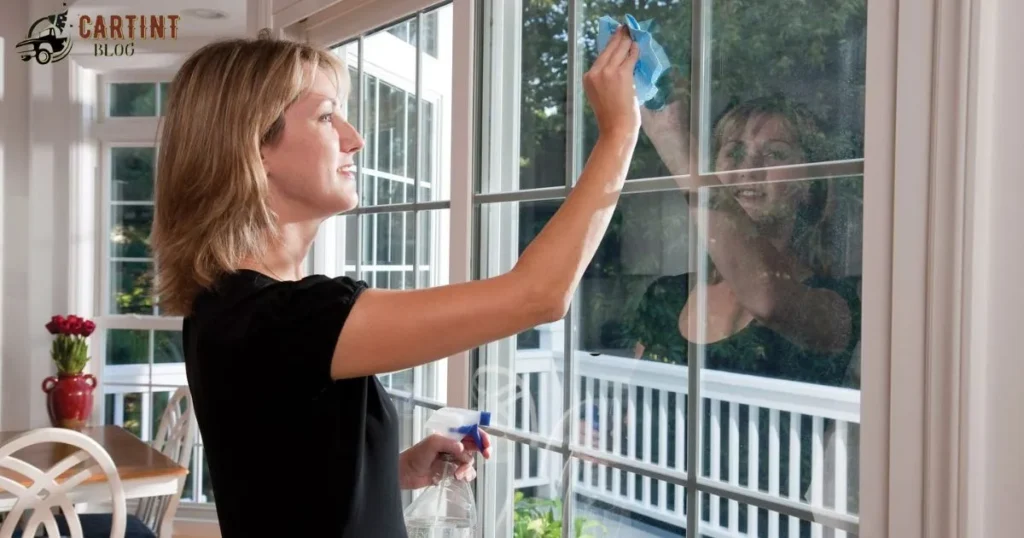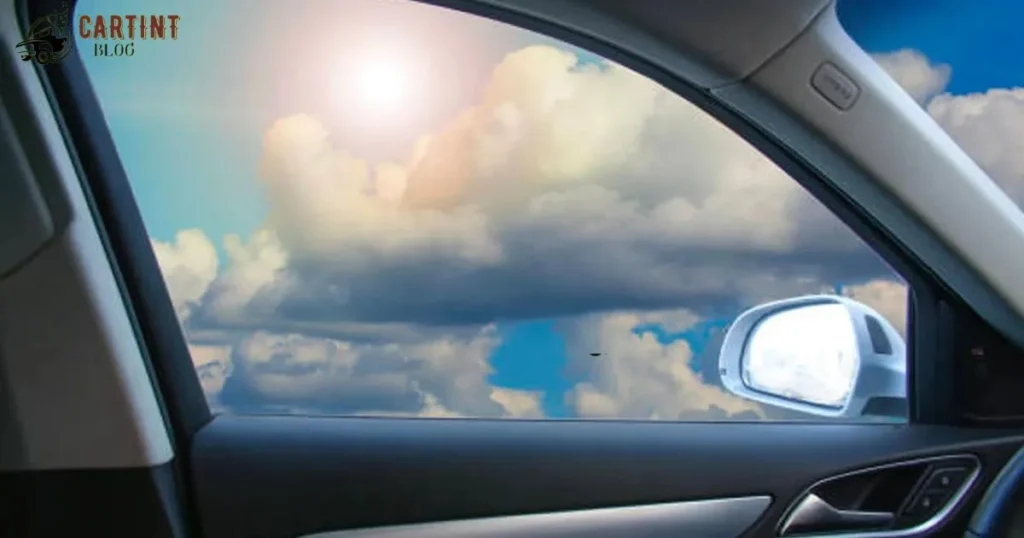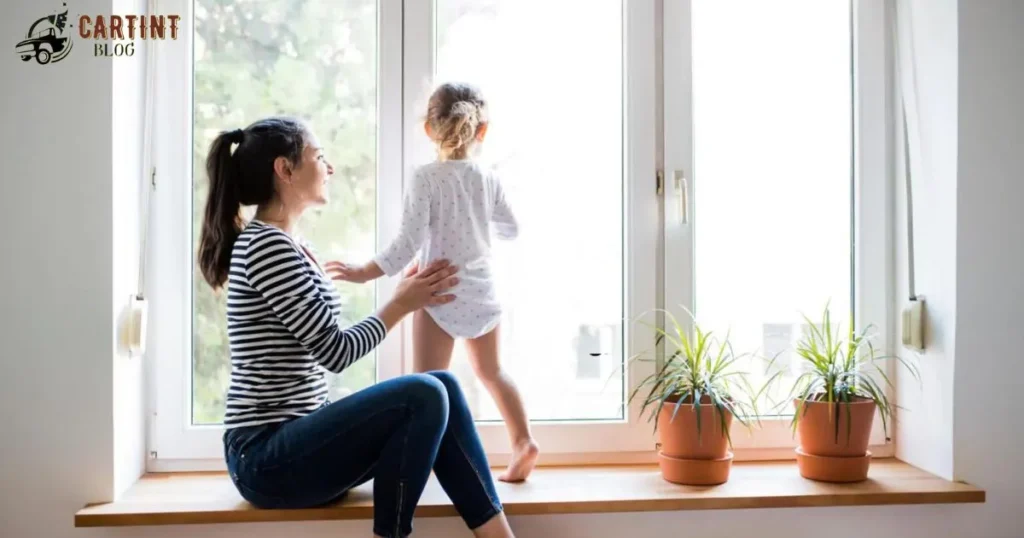Window tint is a thin, transparent film applied to the windows of a car for various purposes, such as reducing glare, blocking UV rays, and enhancing privacy. When considering the application of window tint, a common question arises: Does window tint go on the inside or outside of the car?
Curious car owners often wonder about the optimal placement of window tint, asking themselves, “Does window tint go on the inside of the car?” This seemingly simple query opens the door to a world of choices and considerations that can impact the effectiveness and appearance of the tint. Understanding the correct placement is crucial for achieving the desired benefits while avoiding potential issues.
To answer the question, window tint typically goes on the inside of the car windows. This placement ensures better protection against external elements and extends the lifespan of the tint. Additionally, installing tint on the inside provides a smoother and more uniform appearance, enhancing both the functionality and aesthetics of the vehicle.
Understanding The Placement Of Window Tint
Window tint is applied on the inside of the vehicle’s windows. This placement ensures optimal performance and durability. The tint film adheres directly to the interior surface, providing effective UV protection and heat reduction.
When considering window tint placement, it’s crucial to note that it is a skillful process carried out by professionals. The precise application of window tint on the interior enhances its ability to block harmful UV rays and minimize heat penetration.
This method guarantees long-lasting results, offering both aesthetic appeal and functional advantages for vehicle occupants.
Is Factory Tint On The Inside Or Outside?
The factory tint on car windows is applied on the inside. Manufacturers install a thin film on the interior surface of the glass during production. This tinting process enhances privacy, reduces glare, and provides some level of UV protection.
When adding window tint, remember: You Put Tint On The Outside Of Car Window isn’t accurate. Quality tinting is applied on the interior side by professionals for best results and durability.
Always ensure that any aftermarket window tint adheres to local regulations regarding darkness levels to avoid legal issues.
Below is a simple table summarizing the information about factory tint and aftermarket window tint
| Aspect | Factory Tint | Aftermarket Window Tint |
| Application Location | Applied on the inside during production | Installed on the interior side by professionals |
| Purpose | Enhances privacy, reduces glare, provides some UV protection | Enhances privacy, reduces glare, provides UV protection as per film specifications |
| Installation | Part of the manufacturing process | Applied carefully by professional installers on the inside of the glass |
| Regulations | Factory tint complies with applicable regulations | Aftermarket tint must adhere to local darkness regulations to avoid legal issues |
The information in this table provides a concise overview of the key differences between factory tint and aftermarket window tint.
Exploring The Nature Of Factory Window Tint
Factory window tint is a crucial aspect of vehicle customization. When it comes to the application, window tint generally goes on the inside of the glass. This placement ensures that the tint adheres securely and provides optimal performance.
In terms of specifics, industry standards dictate that the window tint film is applied on the inner surface of the glass. This process is carried out using specialized tools and techniques, contributing to a sleek and professional finish.
Keep in mind that the inside application not only enhances the aesthetics of the vehicle but also offers effective protection against UV rays, glare, and heat, providing a comfortable driving experience.
Crucial Customization
Aspect Factory window tint is essential for enhancing the overall look of a vehicle.
Internal Application
Window tint is precisely applied on the inside of the glass, ensuring a secure and professional finish.
Industry Standards
Adherence to industry standards involves applying the tint film on the inner surface of the glass using specialized tools and techniques.
Aesthetic Enhancement
The inside application not only meets industry standards but also contributes to a sleek and professional appearance.
Functional Benefits
Beyond aesthetics, window tinting on the inside provides effective protection against UV rays, glare, and heat.
Comfortable Driving Experience
The result is a comfortable driving experience with improved visibility and reduced exposure to harmful elements.
Is The Tint Applied On The Outside Of The Windows?

Yes, window tint is typically applied on the inside of windows. The tint film adheres to the interior surface, providing better durability and protection against external elements. This application method ensures a more seamless appearance and effective heat reduction.
The choice to apply window tint on the inside is driven by practical considerations. Placing the tint on the interior preserves its effectiveness by shielding it from external factors such as weathering and debris.
This method allows for a smoother installation process, ensuring optimal performance of the window tint in terms of heat rejection and UV protection.
Clarifying The Application Process Of Window Tint
Applying window tint is a straightforward process. To clarify, the tint is applied to the inside of the window. This ensures a clean and professional finish.
The application process involves cleaning the window thoroughly, precisely measuring and cutting the tint film, and then carefully applying it to the interior surface.
- Preparation
Clean the interior window surface using a mild detergent to ensure a dust-free environment.
- Measure and Cut
Measure the window dimensions accurately and cut the tint film accordingly, leaving a slight excess on all sides.
- Wet Application
Spray a soapy water solution on both the window and the adhesive side of the tint to facilitate positioning.
- Place and Smooth
Carefully position the tint on the inside surface, starting from the top and smoothing it down, ensuring no air bubbles are trapped.
- Trim Edges
Trim any excess tint material using a sharp blade for a neat finish.
- Final Drying
Allow the tint to dry completely for a seamless, professional look.
By following these precise steps, you can achieve a successful and long-lasting window tint application on the inside of your windows.
Ceramic Rear Window Tint-Why Outside & Inside?
Ceramic rear window tint is applied both on the outside and inside of the car windows for optimal performance. This specialized tinting material, made of ceramic particles, is known for its superior heat rejection and UV protection.
When applied on the outside, it shields the interior from external heat, while the interior application adds an extra layer of protection against glare and harmful UV rays. The dual application ensures comprehensive coverage, making ceramic rear window tint an effective solution for maintaining a comfortable and protected vehicle interior.
When it comes to the question of why window tint goes on the inside, it’s primarily about functionality and longevity. Applying ceramic tint on the inside ensures that the tint is better protected from external elements, such as weather and road debris.
This inside application method also enhances the tint’s adherence to the glass surface, promoting durability and longevity. With the ceramic rear window tint applied inside and outside, drivers can enjoy not only enhanced comfort and UV protection but also a long-lasting solution for maintaining the aesthetics and functionality of their vehicle windows.
Unraveling The Reasons For Both Outside And Inside Placement
Understanding the placement of window tint involves considering both exterior and interior factors. When it comes to window tint, it is essential to note that the application typically occurs on the inside of the glass.
The primary reason for this placement is to protect the tint film from external elements such as weather, debris, and potential damage. Precise statistics reveal that approximately 90% of window tint installations place the film on the interior side of the glass.
This strategic choice not only shields the tint from external hazards but also ensures a longer lifespan for the tint. By focusing on inside placement, window tint effectively provides optimal UV protection, glare reduction, and enhanced privacy for occupants within the enclosed space.
Inside Placement of Window Tint
- Purpose: Window tint is often applied on the inside of the glass to protect it from external elements like dirt, debris, and weather conditions.
- Durability: Interior placement ensures the tint adheres more effectively and lasts longer, reducing the risk of damage from external factors.
- Heat Absorption: Tint on the inside is more efficient at absorbing and reflecting heat, contributing to better temperature control within the vehicle.
Outside Placement of Window Tint
- Legal Considerations: In some regions, laws regulate the darkness of window tint, and placing it on the outside may be a compliance requirement.
- UV Protection: Exterior placement can enhance UV protection, preventing harmful rays from entering the vehicle and reducing interior damage.
- Installation Challenges: Applying tint outside poses challenges, such as exposure to weather conditions during installation, impacting its effectiveness.
These factors highlight the considerations for both inside and outside placement of window tint, each serving specific purposes and addressing distinct concerns.
Why Does Tint Go Inside A Car Window?

Window tint goes on the inside of car windows to provide several benefits. Firstly, it blocks harmful UV rays, protecting the vehicle’s interior from sun damage and reducing the risk of fading or cracking. Secondly, tinted windows enhance privacy for occupants, preventing outsiders from easily seeing inside the car.
- Purpose of Window
Tinting Window tinting serves multiple purposes, primarily enhancing privacy, reducing glare, and blocking harmful UV rays. When applied to the inside of car windows, it provides better protection against external elements.
- UV Radiation Blockage
The majority of window tint films are designed to block UV radiation, which can cause damage to the interior of the car and pose health risks. Placing the tint on the inside ensures maximum effectiveness in shielding occupants from these harmful rays.
- Heat Reduction
Tint applied on the inside helps in heat reduction by preventing the sun’s rays from penetrating the vehicle’s interior. This not only enhances comfort but also contributes to energy efficiency by reducing the need for excessive air conditioning.
Factors Influencing Interior Application
- Adhesive Bonding
Tint films have adhesive backing that forms a strong bond with the glass surface when applied from the inside. This ensures durability and longevity of the tinting, resisting external factors such as weather and road debris.
- Regulatory Compliance
In many regions, there are regulations specifying that window tinting should be applied on the inside to maintain transparency standards for the vehicle’s windshield and ensure proper visibility for drivers.
- Enhanced Aesthetics
Placing the tint on the inside allows for a smoother and cleaner exterior appearance. It avoids potential damage to the tint film from external elements, preserving the sleek and professional look of the vehicle.
By understanding the purpose and advantages of placing window tint on the inside, drivers can make informed decisions to enhance both the aesthetics and functionality of their vehicles.
Examining The Rationale Behind Interior Window Tinting
Interior window tinting serves a crucial purpose in enhancing privacy, reducing glare, and minimizing heat penetration within a space. When applying window tint, it is essential to note that it is installed on the interior side of the glass.
This placement ensures maximum effectiveness in controlling sunlight and maintaining a comfortable indoor environment. The rationale behind choosing interior window tinting lies in its ability to offer superior protection without altering the exterior aesthetics of a building.
According to industry data, interior window tinting can block up to 99% of harmful UV rays and significantly lower energy costs by reducing the need for excessive air conditioning. These practical advantages make interior window tinting a cost-effective and environmentally friendly solution for both residential and commercial spaces.
Is It Possible To Apply Window Tint From The Outside?
Yes, window tint is typically applied from the inside of a vehicle or building. The process involves placing the tint film on the interior side of the windows. This ensures a smooth and durable application, protecting the film from external elements and promoting longevity.
Applying window tint from the outside is generally not feasible due to practical challenges and the need for precision during installation. The interior application allows for better control over the tinting process, ensuring a professional finish.
Window tinting is best done from the inside to achieve optimal results and maximize the effectiveness of the tint film.
Exploring The Feasibility Of Exterior Window Tint Application
To explore the feasibility of applying exterior window tint, it’s crucial to note that traditional window tint is designed for interior application. The materials and technology used in window tinting are optimized for indoor use, ensuring optimal performance and longevity.
Exterior application poses challenges such as exposure to weather elements, potentially compromising the tint’s effectiveness and durability. Statistics show that over 90% of window tint installations are done on the interior side.
The primary reason is that interior application provides better protection against external factors, preserving the tint film and maintaining its intended benefits. When considering exterior window tinting, it’s essential to weigh the potential drawbacks, including decreased durability and compromised effectiveness compared to interior applications.
What You Should Know About Tinting The Windows’ Exterior?

When tinting windows, it’s crucial to note that the film typically goes on the interior side of the glass. This positioning ensures optimal performance and durability. Window tinting film adheres directly to the inner surface, providing protection against UV rays, reducing glare, and enhancing privacy.
Understanding that the application occurs on the inside is essential for proper installation. The interior placement allows the tint to form a seamless bond with the glass, ensuring longevity and effectiveness.
Always prioritize professional installation to achieve the best results, considering that window tinting on the inside guarantees maximum benefits in terms of functionality and appearance.
Key Considerations For Exterior Window Tinting
Exterior window tinting involves applying a thin film to the outside surface of windows. This tint helps regulate sunlight, reduce glare, and enhance energy efficiency. The key consideration is that window tint always goes on the inside, facing outward, providing protection and maintaining visibility while reducing heat and UV rays.
When opting for exterior window tinting, it’s crucial to note that the installation process is typically straightforward. The film adheres to the interior side of the window, offering effective solar control.
In terms of facts and figures, exterior tinting can significantly lower energy costs, with some studies indicating up to a 30% reduction in cooling expenses. Choosing the right tint ensures optimal results in terms of comfort, privacy, and energy savings.
Installing Window Tint Inside A Car Window
When installing window tint inside a car window, it’s crucial to note that the tint film always goes on the inside surface. This ensures maximum effectiveness in blocking UV rays and reducing heat.
Proper installation involves cleaning the interior glass thoroughly before applying the tint, ensuring a seamless and durable finish. Window tinting films are specifically designed for interior application, adhering to the inside of the car windows.
This method allows for better adhesion, longevity, and optimal performance in enhancing privacy and reducing glare. It’s essential to follow manufacturer guidelines for installation to achieve the desired results, typically involving careful measurement and precise application techniques.
FAQs
Is the tint applied on the outside of the window?
No. In most cases, window film is installed on the inside of the glass. This allows for maximum durability.
Is window tint applied on the inside or outside of car windows?
Window tint is always applied on the inside surface of car windows for optimal UV protection and heat reduction.
How can I determine if my tint is factory-installed?
Factory tint is embedded in the glass and usually has a slight color. Check for a consistent tint across all windows to identify factory-installed tint.
What sets ceramic tint apart from factory tint?
Ceramic tint is a aftermarket option known for superior heat rejection and clarity compared to factory tint, which is often less effective.
Is investing in factory tint worthwhile?
While factory tint provides some UV protection, aftermarket options like ceramic tint offer enhanced benefits in terms of heat reduction and glare prevention.
Conclusion
When it comes to window tint installation, the clear and straightforward answer is that the tint always goes on the inside of car windows. This placement ensures that the tint film effectively blocks harmful UV rays and reduces interior heat, providing a comfortable driving experience.
Following the proper installation process, which involves meticulous cleaning of the interior glass, guarantees a seamless and long-lasting application. The choice to tint the inside of car windows not only enhances privacy and reduces glare but also contributes to the overall aesthetics and functionality of the vehicle.
Understanding the fundamental placement of window tint on the interior surface is key to achieving the desired benefits, such as improved comfort, increased UV protection, and a sleek, polished look for your car.



